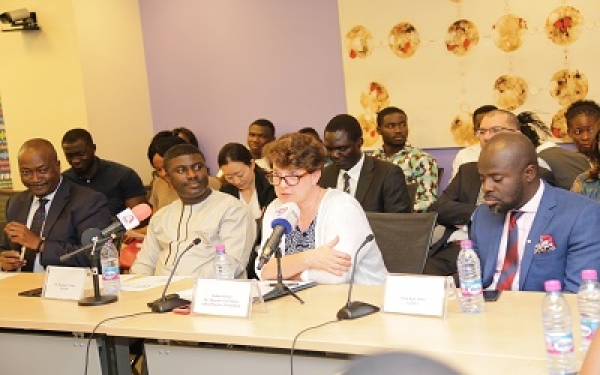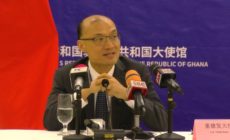Cabinet on April 4, 2018 approved a local content policy which would allow only Ghanaian companies to operate under the CRM.
Mr Alhassan S. Tampuli, Chief Executive Officer of NPA, who disclosed this at a media sensitisation workshop on CRM, held in Accra yesterday, said: “We are minded by the local content policy, which identifies operation such as this one to be reserved for Ghanaian equity participation of 100 per cent. So if you are not a Ghanaian, you will not be given license to operate in this industry as far as the CRM is concerned.”
So far, he said 18 companies have applied for licencing, with one being a foreign company.
He explained that the company wants to operate as a free zones company that would produce in the country, but cannot sell the products in Ghana.
CRM policy
The National Petroleum Authority (NPA) is seeking to move away from the old model of gas filling to a new model, which would see the building of bottling plants that will fill cylinders for distribution at approved cylinder exchange points.
Under the new model, consumers would be expected to exchange empty cylinders for filled ones at retail centres.
Mr Tampuli stated that the policy, when implemented, will help to curb the numerous gas explosions in the country and also solve the stress consumers go through in filling their cylinders.
In order to ensure smooth implementation, he said LPG refilling plants would be classified into low risk and high risk based on their deficiency in meeting safety standards in a risk assessment of all plants by the NPA. The high-risk refilling station would be immediately converted into filled cylinder retail and distribution outlets whereas low-risk refilling stations would be dedicated to the supply of auto gas only, with improved safety standards.
Objectives of the policy
The objective of CRM is to develop a market-driven structure that would ensure safety, increased access and adoption of LPG. It is also to ensure the existence of robust and standard health, safety and environmental practices in the production, marketing and consumption of LPG.
Additionally, it is also to ensure local content and participation in the LPG sub-sector in compliance to the Downstream Local Content Policy while ensuring the sustainability of supply under the new market structure.
The CEO told journalists that the broad objective of the policy was to increase LPG penetration in the country, which was to ensure that at least 50% of Ghanaians have access to safe, clean and environmentally-friendly LPG for increased domestic, commercial and industrial usage by 2030.
Job creation
Alleviating the fear of some LPG Marketing Companies that the new policy is going to wipe away the current players in the industry, Mr Tampuli said the current operators in the market were the spectrum around which the whole new policy evolves.
He explained that the said foreign company that applied would be having its bottling plant in Ghana for shipping filled cylinders outside the country on a daily basis, which would create jobs in the country.
“On the average, a bottling plant can have about 30 employees and then the distribution companies would have not less than six to four people,” adding that “in some jurisdiction, you have a redistribution company which also don’t have less than four employees and then the retailers, all in the new value chain. So the issue that there would be job losses was far from the facts”.
How CRM would work
Explaining how the new policy would work, Madam Esther Anku, Chief Inspector at the Inspection, Monitoring and HSSE Department of the NPA, said the proposed new LPG distribution model will begin with the LPG Bulk Distribution Company (LBDC), whose responsibility would be to either import or buy the LPG from local refinery and gas processing plant, such as Tema Oil Refinery and Ghana National Gas Company, and store the LPG in their bulk storage facility.
The LBDC, she said, would then sell the LPG in bulk to either the bottling plant for the sole purpose of filling the empty cylinders or to the LPG Marketing Companies (LMCs) for bulk sale to industrial end-users – factories, restaurant, and mini-power plants – and also to auto gas users.
“The LPG Bottling Plant Company will be responsible for filling the empty cylinders for onward distribution to LMCs. The LMCs will be responsible for procuring, branding, and maintaining the cylinders. Specialised trucks will be used to transport the filled cylinders from the bottling plants to the retail stations or exchange points, where consumers will exchange their empty cylinders for filled ones.”
Madam Anku told journalists that the new model would be rolled out side by side with the old model until the whole country is covered.
She noted that the country would need eight bottling plants to cover the whole country, but would rollout after the first is built.
Bottling plant requirement
The LPG bottling plant is expected to have a minimum storage capacity of 250Mt with an automated bottling plant and a filling capacity of 1,000 cylinders per hour. The country will be zoned for the siting of these bottling plants. However, the distribution of their filled cylinders will not be limited to any particular zone.
Cylinder Recirculation reserved for Ghanaians – NPA
- Posted on
- Comment
 The National Petroleum Authority (NPA) has indicated that the Cylinder Recirculation Model (CRM), which is to be implemented by the authority, will only have indigenous Ghanaian companies as implementation partners.
The National Petroleum Authority (NPA) has indicated that the Cylinder Recirculation Model (CRM), which is to be implemented by the authority, will only have indigenous Ghanaian companies as implementation partners.










 (Selorm) |
(Selorm) |  (Nana Kwesi)
(Nana Kwesi)